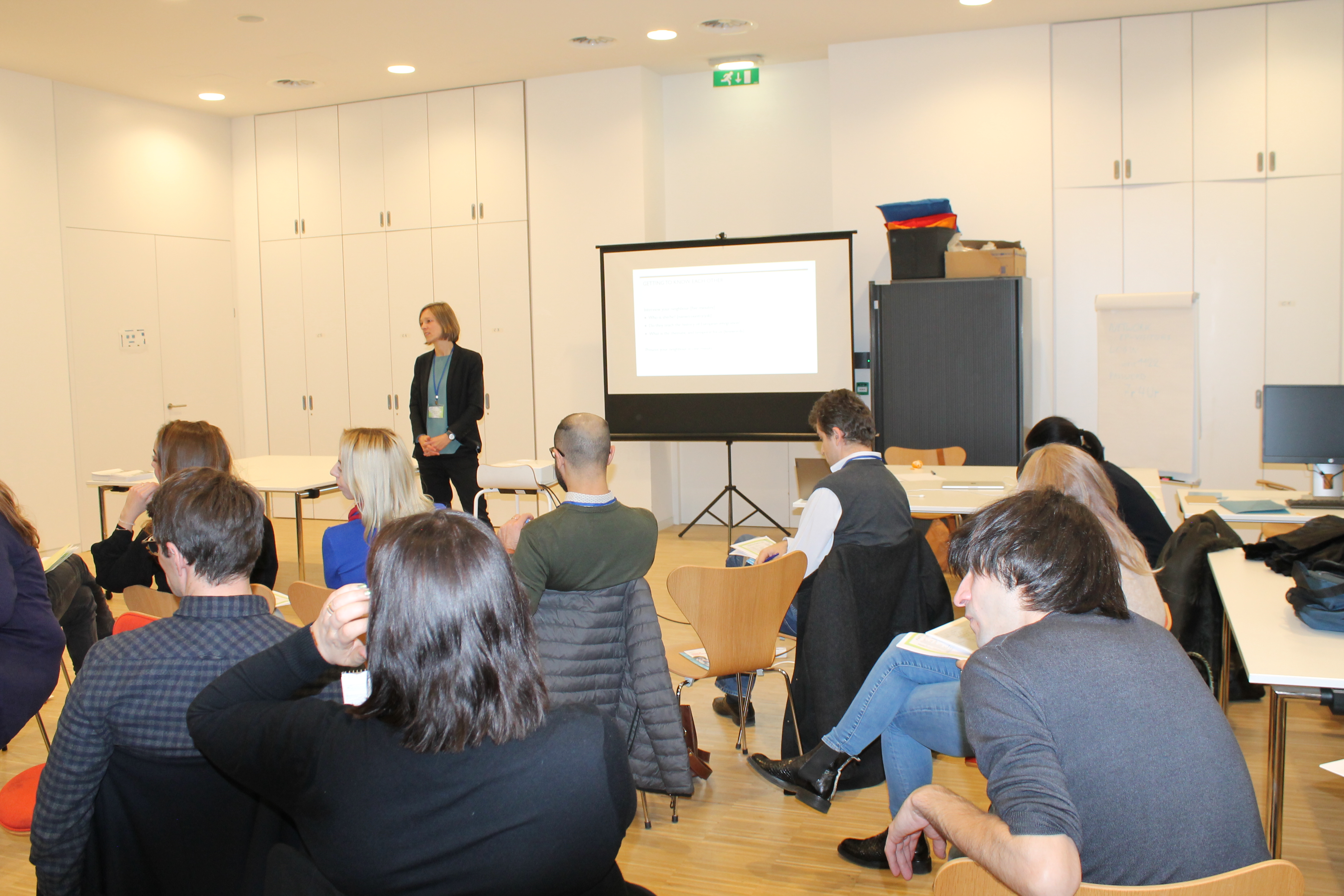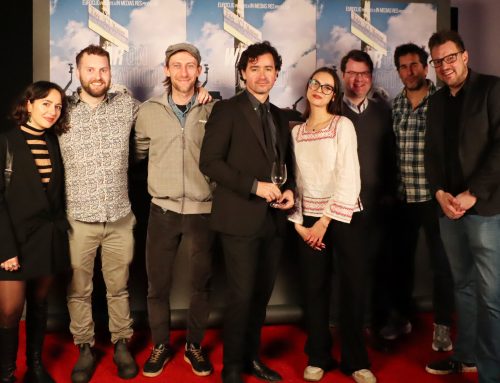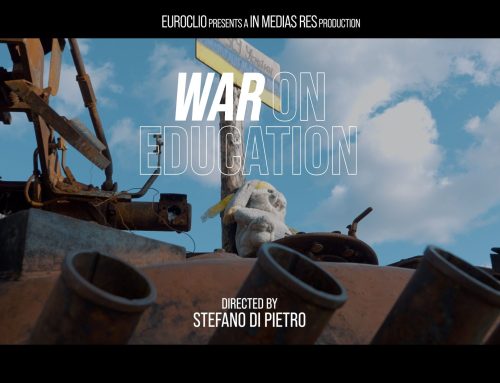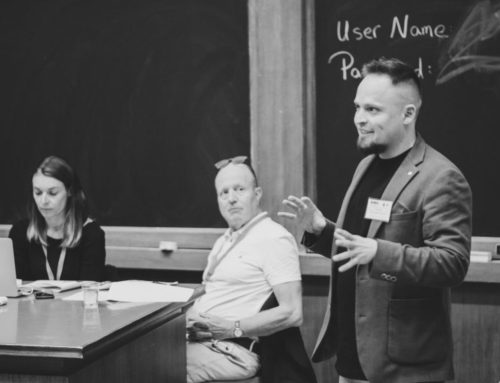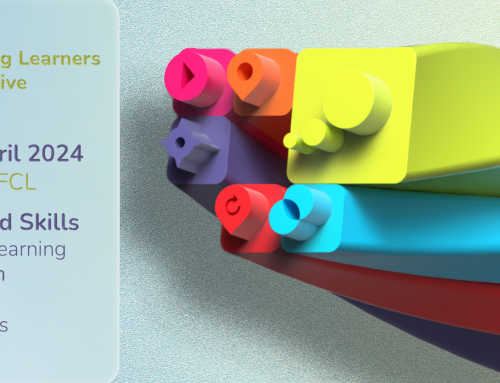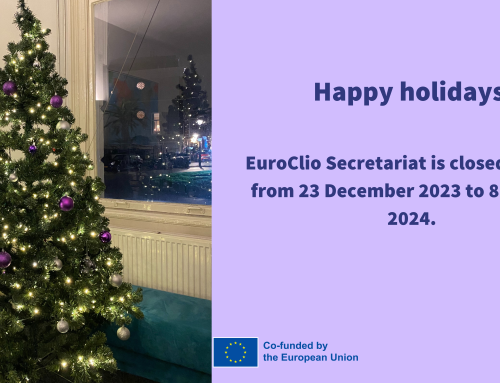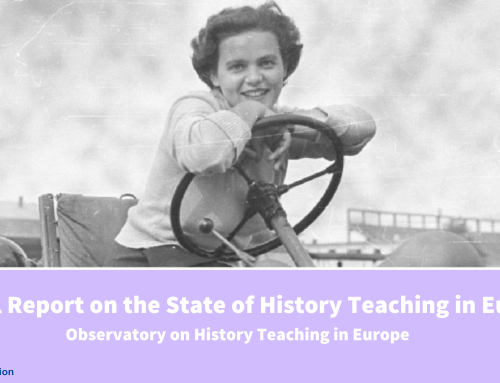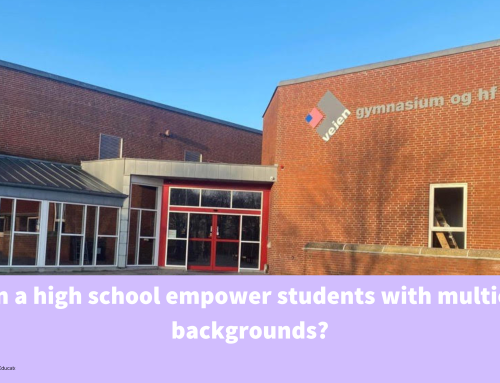The EuroClio thematic seminar on ‘Teaching European Integration” held at the House of European History on 22-24 November 2019 was opened by a keynote lecture from Liesbeth van de Grift*, Associate Professor History of International Relations at Utrecht University. She focused on the theme ‘The case for teaching the history of European integration’, and in particular on the guiding question:
- Why is it important to teach the history of European integration?
- What are potential challenges and obstacles when teaching the history of European integration?
- What are possible ways forward?
During the interactive lecture, some teachers that were participating to the seminar underlined that they find it hard to include European Integration into the curricula, whereas some teachers said that they already teach about it. Liesbeth pointed out that one of the best ways to bring European Integration to the classroom is to show the impact of the European Union on our daily lives. Nowadays, every aspect of everyday life is subject to regulations, many of which were created by the EU to guarantee a common standard in all Member States.
For example, you wake up and brush your teeth with water that comes from pipes, and you know the water is not harmful to you because of EU regulations. Then, you might want to eat an apple, or a mandarin, and you can be reasonably sure that it was not subject to more pesticides than the limit set by the EU, and so on.
Furthermore, she continued, in all Member States people have a varying knowledge of the EU and its history. The role of teachers is especially important in this circumstances. It is only by learning about the history of European Integration, its relevance, and the functioning of the Union, that children will be able to form an opinion on their future.
The main question, thus, becomes “What do teachers perceive as important information to know about, when talking of the EU integration?”. This question has many different responses. The traditional one would be “high politics” (treaties, summits, or resolutions), focusing more on material interests than ideals. Other answers can be looking at the impact of the EU on everyday life, as Liesbeth explained in her introduction, or by showing successes and failures of the EU on the International Stage, as Helen Snelson suggested in another session of the teaching seminar.
The last part of the lecture was dedicated to the discussion of materials which participants are using in their classrooms or what they plan to use. Some participants said that they did not use particular material at the moment, but that they realized the importance of showing the influence of EU on everyday life. Some teachers, on the other hand, teach about EU integration when discussing the nature of democracy, while some others do simulations of elections to the European Parliament in their classrooms for the same purpose.
The main conclusion of the lecture was that teaching about European Integration is a multi-faceted, and not easy, task. There are a variety of approaches and instruments that can be used in doing so. Throughout the thematic seminar, participants got to know some of them.
Read more about the seminar in this article.
*Liesbeth van de Grift, Associate Professor History of International Relations at Utrecht University, specializes in the history of political representation in Europe. She leads a research project on the role of societal actors, such as consumer groups and environmental organisations, in the history of European integration. She is one of the authors of the textbook on European integration history The Unfinished History of European Integration (Amsterdam University Press, 2018) written for bachelor’s and master’s students.

